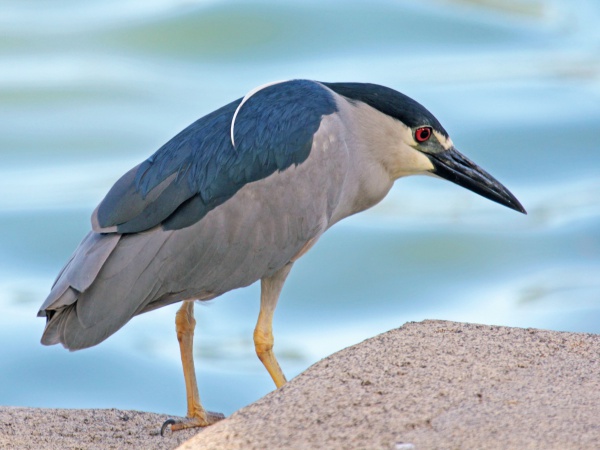Facts About Black-crowned night heron
The black-crowned night heron, also known as the black-capped night heron or simply night heron in Eurasia, is a medium-sized bird found almost everywhere except the coldest regions and Australasia. Adults are easily identifiable by their black crowns and backs, white or grey bodies, striking red eyes, and short yellow legs. They have a more robust build compared to other herons. Juveniles, however, have duller plumage and are notably noisy, particularly in nesting colonies.
These herons inhabit both freshwater and saltwater wetlands across the globe. They nest in colonies, constructing nests from sticks placed either in trees or on the ground, and typically lay between three to eight eggs. Depending on their location, some of these birds migrate while others remain year-round. In North America, they migrate south to Mexico and the southern United States for the winter. Birds in the Old World migrate to tropical Africa and southern Asia. Notably, there has been a colony at the National Zoo in Washington, D.C., for over a century.
When it comes to hunting, black-crowned night herons are masters of stealth. They often stand perfectly still at the water's edge, primarily hunting at night for fish, crustaceans, frogs, and even small mammals. They employ an ingenious technique called bait fishing, using objects to attract fish. During the day, they prefer to rest in trees or bushes. These herons are also hosts to a variety of parasitic worms, with different regions displaying varying infection rates.
The name "Nycticorax" is derived from Greek, meaning "night raven" alluding to their nocturnal feeding habits and crow-like calls. In the Falkland Islands, they are affectionately called "quark" an onomatopoeic name mirroring their call in several languages. In Great Britain, sightings of the black-crowned night heron have been rare but documented in both ancient and modern times, with some evidence suggesting that they have even bred in the wild there.

 Argentina
Argentina